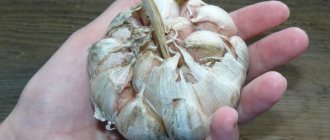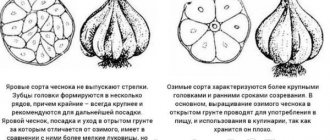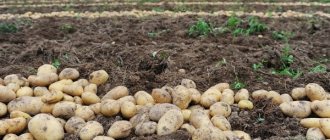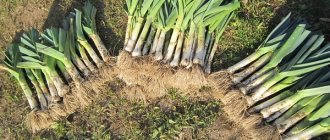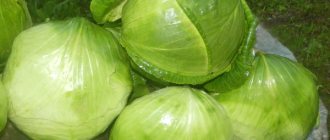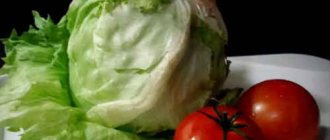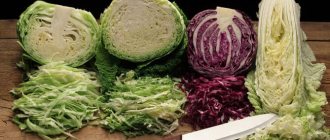Health lovers respect Brussels sprouts for their high nutritional value despite their simply ridiculous calorie content. And the taste of the cute heads of cabbage will not leave the most jaded gourmet indifferent.
Despite the many advantages of this vegetable, it has not yet taken its rightful place in the beds of Russian amateur vegetable growers. Today I will reveal all the secrets of growing Brussels sprouts that will help you get a bountiful harvest in the first year of planting.
When to Harvest Brussels Sprouts in the Fall
Early and mid-season varieties ripen in about 100 days, and in the middle of the season they can already be harvested. These include:
- Long Island;
- Franklin;
- Oliver;
- Dolmik.
Late varieties, unlike early ones, ripen later, but at the same time remain fresh longer during winter storage. This crop is harvested in late autumn or early winter, after frost.
You can’t overcook the heads of cabbage, otherwise they will freeze, and if you hurry, the cabbage will begin to wither ahead of schedule.
The most popular late varieties:
- Hercules;
- Sapphire;
- Curl.
In the south - in the Krasnodar Territory, Crimea, and the Caucasus - the fastest ripening; in the central part of the country the harvest will be ready a little later, but still faster than in the Far East and Siberia. It is also worth considering the weather during the summer season: a cold and rainy summer will prevent early ripening.
It is also important to take into account the time of planting - this is the beginning of the countdown by which the ripeness of cabbage is judged. From the end of April - beginning of May, 5 months must pass until the crop ripens. If young plants were transplanted only in June, the period increases by another 1-1.5 months.
To determine when it's time to cut the heads of cabbage, do a quick maturity test. Press together with your thumb and forefinger – it should be tight. Then listen - a slight creak should appear when pressed.
When ripe, it is the size of a walnut; the bottom 3 leaves should turn yellow or brown. It is better to tear off all dried and damaged leaves immediately. They are concentrated in the lower part of the plant. The ripe lower heads of cabbage can already be cut off, because they take up nutrients and do not release them to the top of the bush, which is why the upper ones will ripen more slowly.
Important! Brussels sprouts ripen from the bottom up the bush, so cutting can be done in stages.
To understand when to harvest Brussels sprouts, pay attention to the following factors:
- Yellowing of 2-5 lower leaves that need to be removed.
- The lower heads of cabbage ripen and increase in diameter to 4-5 cm.
- Cutting off the bottom ripe vegetables and then yellowing the next 3-5 leaves after 1-2 weeks. Further gradual ripening of heads of cabbage from bottom to top.
Don't be afraid to wait it out: Brussels sprouts are frost-resistant and ripen at low temperatures.
Pinching the top
A very important agricultural technique is pinching the apical point of growth, but the leaves must be left behind. The first pinching should be done when the ovaries begin to actively form, this will help prevent the formation of new heads. It is important not to rush here: if you pinch early, you won’t see the harvest, there will only be tops on the stem.
The second pinching is necessary in late September. In this case, you need to cut off the entire top with axillary buds.
Harvesting Brussels sprouts
They begin harvesting from the bottom up as they ripen. So, you can cut about 15 heads of cabbage at a time, and after 1-2 weeks - another 10-15 pieces. and so on until the bush is completely ripe to the top. If cabbage is properly processed and pinched in time, a harvest from 2-4 plants will be enough for one standard family.
Weather conditions do not affect harvesting in any way; The main thing is to keep it clean and not forget about the already cut wet heads of cabbage. If they are in a bag or tightly closed container, they will smear or rot.
If there were frosts at night, it is better to postpone the harvest to the evening so that the taste is close to natural and the vegetable recovers from the low temperature.
Both with high humidity and after frost, it is better to let the bushes dry out so that the harvest can then be better stored. You don’t need any special equipment for harvesting Brussels sprouts: arm yourself with a clean and sharp short knife and a container for the cut heads.
If frosts hit ahead of schedule, you can save unripe plants and give them the opportunity to bear fruit in a warmer place. To do this, you need to dig up the entire bush with its root system and bury it in a greenhouse or greenhouse.
Important! Cabbage heads ripen from bottom to top and unevenly, 10-15 pieces each. in Week. It will not be possible to collect the entire harvest at once. It is better to choose a dry and warm day for cutting forks.
If you want to keep the harvest fresh for as long as possible, the vegetables are cut along with the shoots, which will provide food for the heads of cabbage for some time.
Immediately after harvesting, cabbage is eaten or processed for longer storage. Rooms with average humidity and a temperature range of +2...+5°C are suitable for this, for example, balconies, basements and loggias.
General characteristics
The culture has a characteristic appearance. A large number of small heads of cabbage grow on a long stem reaching more than a meter in height. In total, their number can reach 50–70 pieces, and the total weight is 700–800 g. It is very convenient to cook them directly whole. For culinary purposes, heads of cabbage are consumed boiled, stewed, fried and pickled. The product has a delicate and pleasant taste, but it can easily be spoiled by prolonged cooking.
The nutritional value of the product is enormous. It contains nitrogenous substances, highly digestible proteins, B vitamins, ascorbic acid, fiber, and valuable organic compounds.
The growing season of Brussels sprouts is long – almost 180 days. Adult specimens tolerate 7 degrees below zero without problems. This type of cabbage is cultivated mainly in regions with moderately hot summers and warm, long autumns. For planting, it is better to choose proven varieties from well-known and well-established agricultural companies that offer seeds suitable for the climatic conditions of our country.
How to speed up maturation
Plant cabbage at the end of April - beginning of May so that it is ready by September. If you live in the northern regions, make a frost shelter using improvised materials. Fertilize the soil with organic matter or minerals based on calcium and phosphorus.
Compost and wood ash are suitable organic fertilizers. Be careful with droppings, as they can injure delicate and fragile roots. It is better to fertilize the soil in the fall, immediately after harvesting. Then, over the winter and spring, all the necessary microelements will dissolve, and there will be more nutrients in the soil.
Use the method of pinching the top of the bush . To do this, remove the top growing point on the stem to prevent the appearance of side shoots on which small heads of cabbage will grow. They will not allow other forks to develop on the main shoot. This measure will also increase productivity.
Attention! Pinching is carried out a month before the end of the growing season (in mid-summer, when cabbage is actively growing).
The developed plant must meet the following criteria:
- The bush reached a height of 70-110 cm.
- On the lower part of the stem, the heads of cabbage are well formed.
- In the axil of each leaf, 1 loose small head has formed.
Pinching is done with a clean and sharp knife, and the cut site is treated with wood ash to avoid infection and the entry of infectious agents.
Description of culture
Brussels sprouts have a thick stem from 30 to 70 cm high, bearing spirally arranged sparse long-petioled leaves, in the axils of which by autumn small heads (2–6 cm in diameter) and weight are formed in quantities of up to 40–60 pieces. On the stem they sit quite tightly to each other, but the lower ones are much larger than the upper ones, so the impression of a cone-shaped plant is created. The leaves are green, less often purple, with a weak or medium waxy coating.
When ripe, Brussels sprouts resemble either pyramids or palm trees
Brussels sprouts have excellent taste, the ability to withstand frosts down to -10°C without damage and retain their original qualities for a long time. Small but dense heads of cabbage are convenient for canning and pickling in jars of any capacity, as well as for serving dishes.
High taste and nutritional qualities are due to the high protein content (up to 6.5%), which in terms of amino acids is not inferior to meat and milk protein. In terms of the content of vitamins and minerals, Brussels sprouts are significantly superior to other types of cabbage.
This crop is low in calories, which is useful for those who are on a diet. Negative qualities: it is low-yielding, demanding on highly nutritious soils with moderate constant moisture.
This cabbage is most popular in Western Europe, especially in Holland and Great Britain. In Russia, it is grown relatively little, and in amateur gardens it is very rare.
How to store it correctly
Fresh storage without the use of any special means cannot exceed 10 days. To do this, place dry, clean cabbage in a perforated plastic bag and put it in the refrigerator.
Much longer (up to two months) the heads of cabbage will lie in the basement or on the balcony in dry sand.
The most durable method is freezing. To do this, you need to rinse and dry the heads and put them in a zip bag or other sealed plastic bag so that foreign odors do not affect the taste.
This is interesting:
The best recipes for pickling Brussels sprouts for the winter
Let's find out whether there is starch in cabbage and what are the benefits and harms of starchy vegetables
Care instructions
If the crop is planted correctly, then there should be no problems with caring for it. However, those who grow Brussels sprouts in the country should not forget that there are agricultural techniques that must be followed.
Irrigation and fertilization
When the crop is grown for the first time, it is worth keeping in mind that this cabbage loves water. Before the heads of cabbage form, at least 9 watering procedures will be required. From the moment the ovaries appear, this figure will increase.
The optimal time for watering is considered to be morning and evening. At this time, the sun is not so dangerous, especially for foliage. Watering is not carried out after precipitation, on a hot day or at lunchtime.
As for fertilizing, Brussels sprouts require regular addition of nutrients. However, this should be done correctly. You should not get carried away with organic matter, otherwise the crop may begin to rot. Excessive application of nitrogen fertilizers is fertile ground for the development of many diseases.
Fertilizers are applied as follows:
- After rooting has occurred. A week after planting, the grown seedlings are flavored with nitroammophos. One plant will need 0.5 tsp. agent dissolved in liquid.
- During the formation of ovaries. At this time, fertilizing with nitrogen fertilizers is prohibited. Superphosphate and potassium sulfate are most often used.
- If Brussels sprouts are planted on soil with insufficient nutrition, fertilizing is carried out more often. After the first application of fertilizers, the leaves of the plants are sprayed. During the period when fruits are set, the amount of fertilizing also increases. This is especially relevant for later types of culture.
See also: Is it possible to remove and tear off the lower leaves of cabbage?
Expert opinion
Stanislav Pavlovich
Gardener with 17 years of experience and our expert
Ask a Question
Important! Any activities carried out using chemicals are carried out after watering.
Hilling up and loosening the soil
Taking into account the special structure of Brussels sprouts, hilling in the garden bed, as a rule, is not carried out, or it is done in a small layer.
While the crop is in the garden, the soil is loosened about 6 times, or even more. This is especially true after watering or precipitation. Untimely loosening of the soil will retard the growth of cabbage. Also, do not forget about adding mulch.
Protection from insects and pests
Insect prevention consists of eliminating pests that can survive the winter period. Taking into account that most of them wait out the cold in the upper part of the ground, and the causative agents of many diseases are preserved on the remains of plants and in the soil. Deep digging of the soil in autumn helps to reduce infectious deposits and will eliminate most wintering insects.
In the spring, cruciferous weeds are eliminated from the site, which are food for pests awakening after hibernation.
One of the main pests of the crop is the cabbage fly, and it seems possible to protect the crop from it in several ways:
- engage in planting seedlings in the early stages;
- sprinkle the soil with tobacco dust and ash within a radius of 4 cm from each plant.
You can minimize the number of aphids, caterpillars or whites by using insects that eat them. To attract such helpers, you can sow fennel, dill or anise in the garden.
